Coffee Table Part 4 – Laminates And Glue
I am going to prepare the mahogany laminates for the bending form. It begins with a rough piece of wood that need to be smoothed out on the jointer and planer.
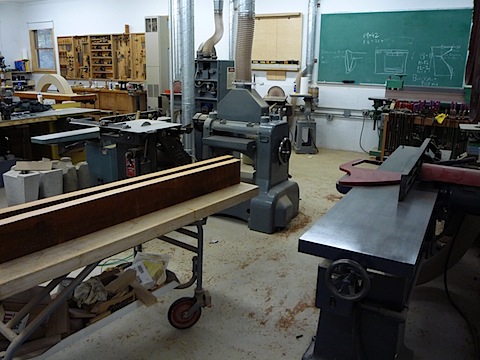
Next stop is the table saw to rip the one remaining rough edge parallel.
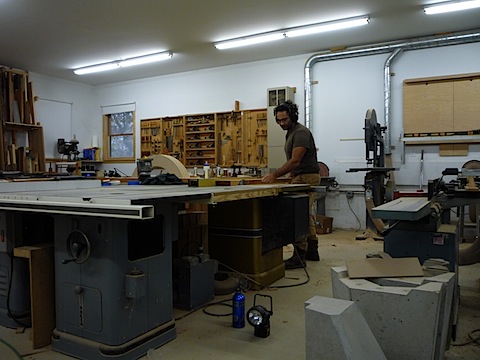
I am using a marking gauge to draw a parallel line just less than a 1/4″ thick. I am targeting a size that will be able to bend over the form without breaking.
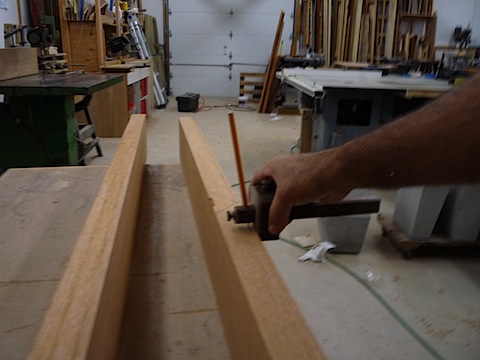
I set the fence on the big bandsaw to that dimension.
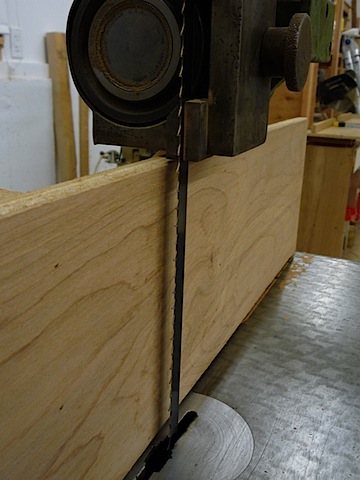
I start to peel off layers of the wood.
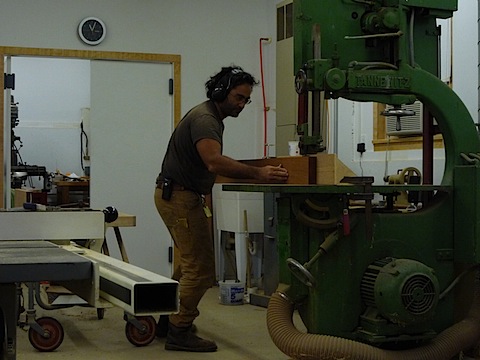
After each pass I go back to the planer to smooth out the bandsaw marks before the next pass
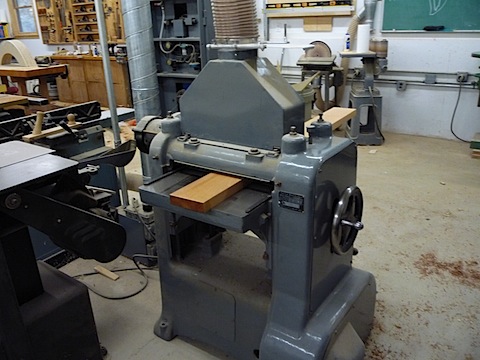
The pile of laminates is not quite ready. Each piece has one rough side from the bandsaw.
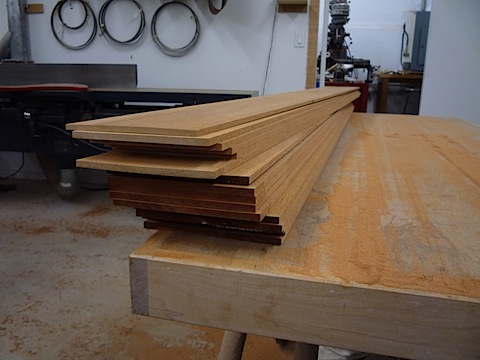
The pieces are too thin to go through the planer so I use a piece of plywood to support them.

Ready for lots of glue and a tremendous amount of clamp pressure.
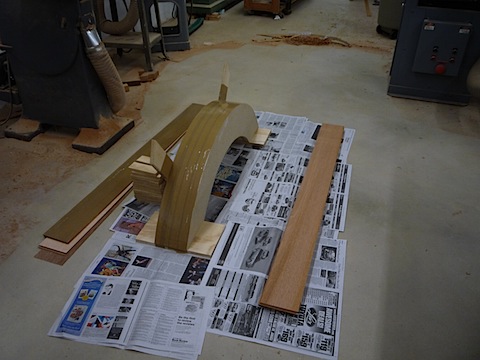
Here we go. The laminates are covered with a few layers of thin plywood to help even out the clamp pressure.

A bit further. By now I am wondering why I haven’t figured out a way to do this without having to use me hands? They hurt and there are so many more clamps to go on.
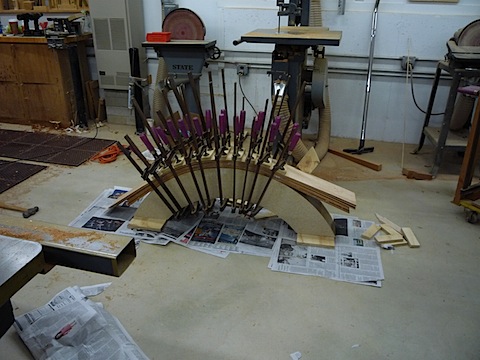
All done!
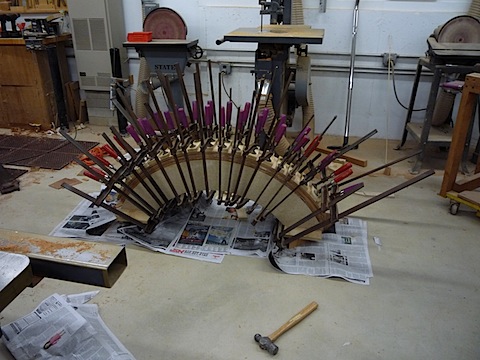
I always complain while I am doing a bent lamination. Once it is over and I have the curved wood to work with it all seams like a distant memory. The benefit to my furniture is that I now have an element that will accentuate the movement that is central to my style. Bent lamination is the technique best suited to a shop of my size making one of a kind pieces of furniture. That said I have been inventorying steam bent curves that I have been buying from a company in the Mid West. The quality has blown me away. I think it is time for me to order a variety of curves in a variety of woods. Working with them is not an option for this piece because it takes 6 weeks for the curves to arrive. If I had them in inventory I could augment those curves with the occasional bent lamination. The quality of the piece would not suffer, the cost of the materials would not be different but my hands would be a lot happier. Plus I need to take a long hard look at the amount of waste involved in the bent lamination process and compare it to the amount of energy needed to steam bend and ship from the Mid West. I have made a number of improvements to my environmental footprint since opening my doors in 1995. I think this is one more place that I can choose the “green” solution without compromising a thing. I have to pay attentions since my shop stands at about 35 feet above sea level. Such are the concerns of life in the Hamptons.
Coffee Table Commission
Part 1
Part 2
Part 3
Part 4
Part 5
Part 6
Part 7
Part 8
Part 9
Part 10
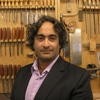 By Nico Yektai -
By Nico Yektai -New York based designer/maker Nico Yektai opened the doors to his Hamptons studio in 1995 after completing the MFA program at the School For American Craft at the Rochester Institute of Technology. The rigorous technical training complimented his background in Art History, which he studied, at Hobart College in Geneva NY. Yektai has synthesized this background into a singular style that has gained him national attention. Visit nicoyektai.com for more information